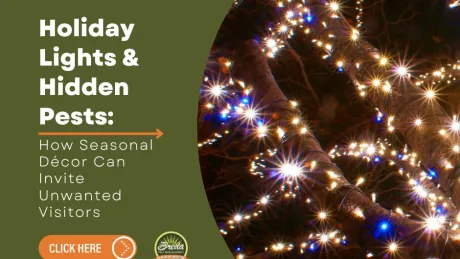Anyone who's lived with an infestation of bugs or pests knows that it's no fun cleaning up after invaders! If you're wondering how to sanitize your home in the wake of a pest infestation, then you've come to the right place.
Droppings, Debris, and Remains
Droppings
One of the three main types of pest leavings is droppings. Many people think of pest droppings as just a gross inconvenience. However, the materials a pest leaves behind can pose real health concerns. While many types of bug feces can cause distress for allergy sufferers and asthmatics—it's the rodents that get the most headlines when it comes to this topic (and for good reason). Their waste can carry and spread diseases as dangerous as the Hantavirus.
Make sure to wear gloves and a mask or respirator while cleaning up rodent droppings. Do not sweep or vacuum the droppings, as doing so can hurl infected material into the air. Instead, spray the droppings with disinfectant or diluted bleach. Let the spray soak in (about five minutes), then wipe up the waste with paper towels. Dispose of the droppings and soiled paper towels in an outdoor garbage bin. If the urine or droppings got onto fabric (i.e. clothing, etc.), throw the materials in the washing machine on the hottest setting possible. Contaminated furniture should be shampooed or steam-cleaned.
Insect droppings can also be an irritant. However, insect droppings don't require the same level of care. Specks of fly feces are often found on window frames, and can be cleaned up with a paper towel and household cleaner. Other bugs also leave droppings, or "specks" as they infest your home. Vacuum the droppings up, then disinfect the area with household cleaners.
Debris
Bug and pest infestations can leave behind damaged materials in their wake. Wood-chewing bugs (like termites or carpenter ants) can leave sawdust mounds and damaged wood. In addition, rats and mice are especially notorious for their nesting material, and often damage their surroundings.
Rodent nests typically contain urine and feces. As such, these nests should be treated with the same process described for droppings above. Materials damaged by wood-eating bugs should be appraised. An appraisal will help identify whether the materials can be patched or need to be replaced. Keep in mind that often the real extent of wood damage is hidden behind an apparently sound structure. Don't hesitate to call in a professional, either a contractor or pest control experts, to assess the situation.
Remains
If you find rodent remains, don't suck them up with a vacuum. Wear a mask and gloves, and scoop the body into a disposable plastic bag. Then, disinfect the area where the body was laying. Insect remains are simpler to dispose of, and can be vacuumed or swept up and discarded.
Be sure to wish them 'good riddance' as you drop them in the trash!



